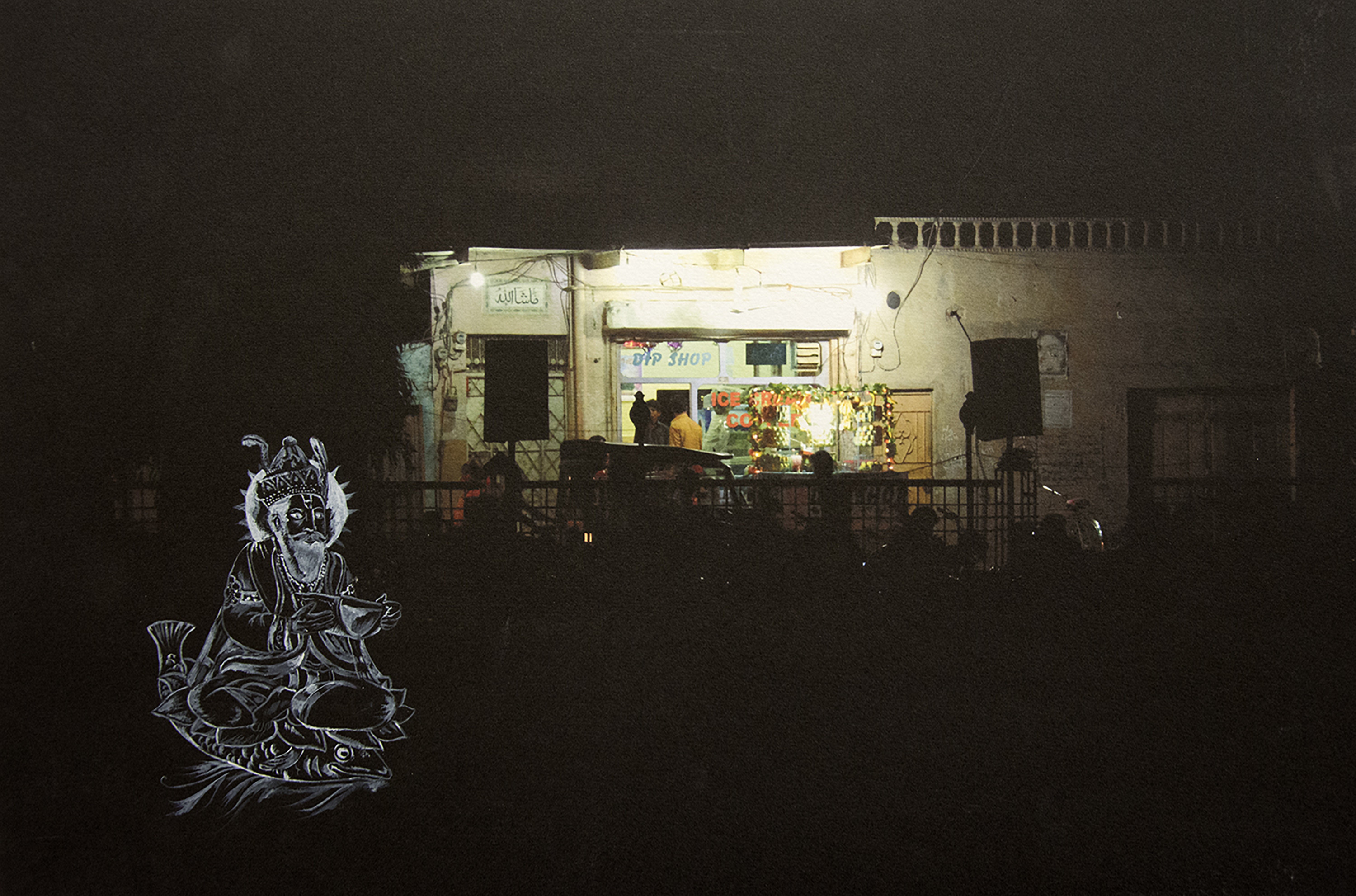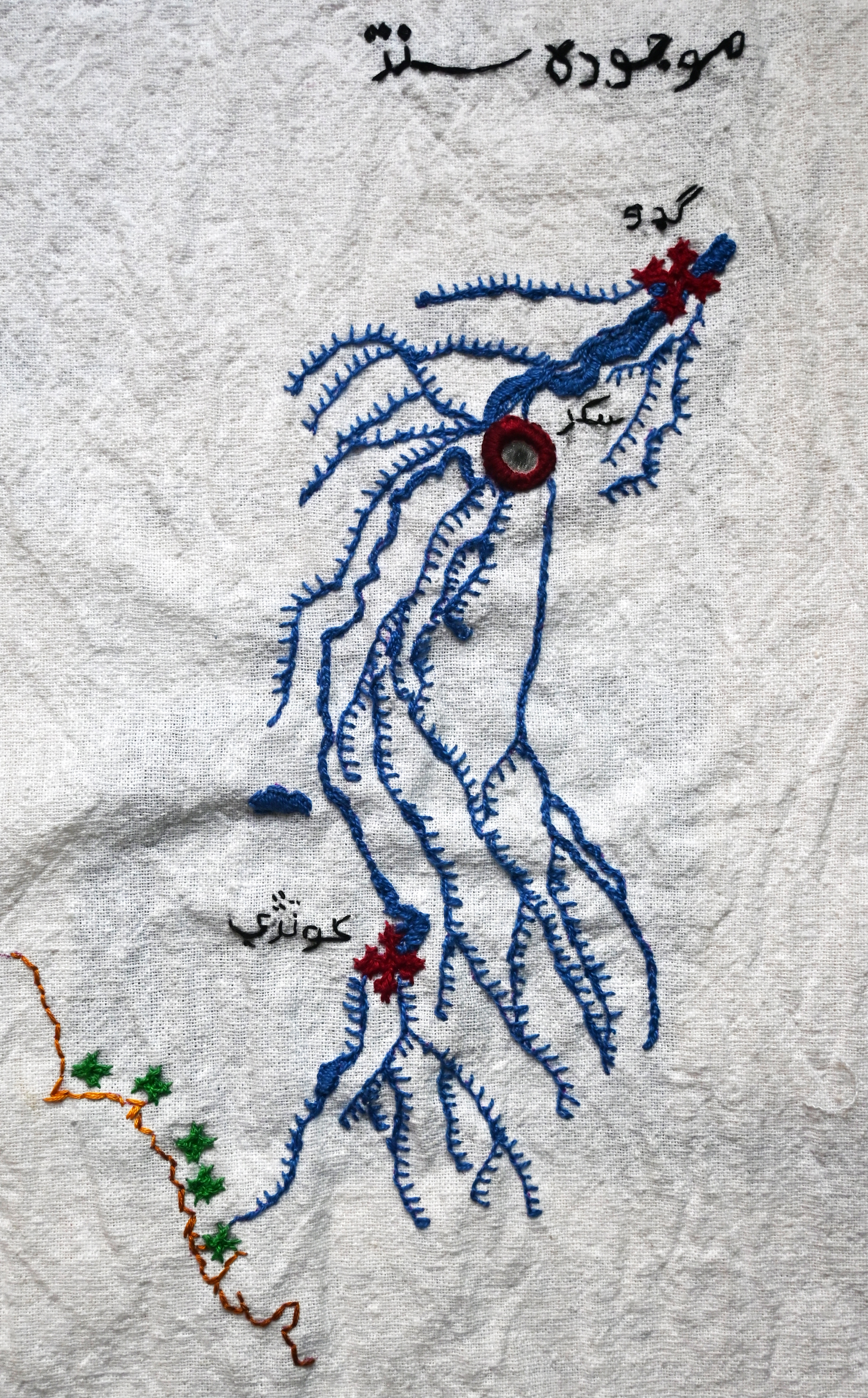I met Zulfikar Ali Bhutto Jr a few weeks ago in his home residence of 70 Clifton. The residence, just a short distance from Bilawal House, was the epicentre of socialist politics between 1967 and 1988, where it was once a symbol of resistance against the military.
The senior Mr Zulfikar Ali Bhutto had given many of his speeches from here and it was also the location where Benazir and Nusrat Bhutto’s were put under house arrest for three years. The location was also where Benazir famously held her press conference after her return in 1986.
Metres away from the house is also where Mir Murtaza Ali Bhutto was shot to death in 1996 – one of those ominous memories linked to this piece of land that is hard to forget.
At the entrance of his residence, in the midday heat, I was greeted by him and his dog, Cujo. Though the latter was a lot more docile than his name would otherwise suggest. Clad in a deep maroon kameez shalwar and a Sindhi topi, Zulfikar looked both the picture of a whimsical artist and a proud Sindhi.
When I’d spoken to Zulfikar earlier on the phone, I’d learned that he prefers to use his full name ‘Zulfikar’ rather than a shortened ‘Zulfi’ or any other nickname. “I like using the full name that was given to me,” he’d said proudly.
Located in the back section of his home, is his office and studio. As you enter the office, there’s a large table and its left is a book shelf. Among the books are also several copies of his sister Fatima Bhutto’s books as well.
On the table itself, where many copies of books containing research on dolphins are stacked (relating to his recent work), is a framed picture of his late father Murtaza. Zulfikar after completing his degrees in the UK and US, spent some years showcasing his work abroad before moving back to Pakistan in 2020. “When I first moved back to Pakistan people said I wouldn’t last a year,” he laughs. While doing well as an artist in the US (he had four exhibitions during the pandemic alone, including one which is a solo), he felt it was time to come back.
His decision to move was largely based on being closer to his family and being a part of his younger brother’s life, however, for his work in particular, he feels he has a lot more to express through his art. “As different as Pakistan is, there’s so much more [I can do here]. I think my voice here is perhaps much more useful,” he says.
“I think the US [and it’s culture] is very good at making you feel like you as an individual is the only thing that matters but eventually there comes a time in your life where you have to look at the bigger picture,” he says. “Pakistan, in contrast, is good at pulling your attention elsewhere.”
All across his studio are religious totems, pictures and inscriptions. A picture of Jesus Christ sits on a shelf, a statue of a Hindu god hangs on the wall and some Sufi inscriptions are painted on the walls – all part of a previous art series done by him on religion and spirituality.

On the inner wall of his studio is a painting of a sword with PPP colours and underneath it in Urdu it reads, ‘Hasan, Hussain, Abbas, Fatimah, Muhammad and Ali’. Right under it, hangs a a cross.
For Zulfikar, a lot of his work ties in with a region he’s grown up in and is extremely passionate about. This is where his identity as artist ties in with identity of Sindh. For him, Sindh is so ‘culturally dense’ and there are so many religions, languages and cultures. Through his work, he shows how cognate they all are.
Sadhu Bela Mandir lies between Rohri and Sukkur, along the Indus river. Khwaja Khizr, who is considered a saint by Muslims and a god by Hindus, who refer to him as ‘Jholay Lal’, also has a shrine in the middle of Indus river in Rohri, Sukkur. Satiyan Jo Aastan, also known as ‘Seven sisters,’ is located on the Indus River near Rohri as well. The site, where Muslims go to pray for daughters, gets its name from ‘sati’, which refers to the Hindu practice of women burning themselves up as purification and self-sacrifice. “It’s interesting because it’s got so much merging of the two,” he says.
On the floor of his studio, right next to a row of dumbbells and other weights – an indication that the studio is both a creative space as well as a makeshift home gym – are two metre-long black and white screen-printed and embroidered fabrics. A series he refers to as a ‘sci-fi futuristic Muslim project’ – an imagining where sci-fi and Sufism come together. Inspired by the ‘Alams’ that are taken out as parchams (flags) during the Ashura procession. The two flags have been screen-printed black and white and have traditional gold appliqués stitched onto them along with other embroidery meticulously and painstakingly sown by Zulfikar over a span of six months.
Much of Zulfikar’s art now comprises fabric. About seven years ago, he was curating an exhibition with a friend of his but things were moving very slowly on the project and the waiting around had made him anxious. To curb the anxiety, he began to embroider. “I always thought embroidery was something you had to be doing for years and years, in order to be good at it but once I began it just felt so instinctive,” he said.
“You look at a painting or a sculpture, and there is a sense of distance. You don’t feel like you can come close to it,” he said. “It’s got this sublime element that people can look at but not touch whereas with textile, it’s something people can touch and feel. In Pakistan, what frustrates me is that people look down on textile. They see the labour that’s associated with textile. They don’t see it as artistic labour, they see it as poor man’s labour. And while there’s a lot of integrity and honour in that, there is a classist idea of what art should be.”
People usually suggest that I should just outsource my work and I always laugh and respond with, ‘Does a painter outsource his paintings?” he jokes.
In one corner is a black and white screen-printing of a bull with large horns – both intimidating and majestic – merged together with a male torso adorned with embellishment and covered with a red velvet embroidered skirt or ‘lehenga’. The backdrop is a pink velvet fabric embroidered with gold. It’s both shocking and bold, and reminds me of the André Breton quote from the end of Nadja: ‘Beauty will be convulsive or will not be at all.’
“I like pretty things; I like lavish things. I don’t like plain. We shouldn’t be satisfied with plain things; we should expect more. I like things that shine and shimmer,” he says about the piece. Zulfikar, in an effort to hold on to his identity as a Sindhi and as a Pakistani, took this with him to San Francisco. “This was me trying to still hold onto Pakistan and I resisted so much [of the change].”
“People started referring to as an ‘immigrant artist’ and a ‘diaspora artist’ and I told them, ‘I am just here for a bit and I am not an immigrant,’” he says.

So much of Zulfikar’s work is steeped into the richness of Sindh. His upcoming collection focuses on the Indus river dolphin specifically. Before this interview, he’d been on a ten-day dolphin survey. His work, which is still in progress, is what he refers to as ‘Ralli’ - the Sindhi word for blanket. The blanket in its sowing together also merges the story of the Indus dolphin. It includes screen prints of the local Jabbar caste that was involved in the dolphin rescue project responsible for the research responsible for the government of Pakistan declaring the species as endangered. The blanket also includes images from the swiss scientist Georgio Pillari’s ground-breaking research on the Indus river dolphin. Images from the Sadhu Bela Mandir are also printed on the blanket.
The Indus river dolphin – the only dolphin out of seven species in the world with a growing population. His recent work, which was shown at Satrang gallery in Islamabad earlier this year, also ties in with the Indus river. “Rivers as you know are under a lot of stress because that’s the main source of fresh water,” he says. He rattles of facts ad nauseum both about the river and about the Indus river dolphin. “It’s the river flora and fauna that are most at risk and the Indus is no exception.”
“I think for me it’s really interesting because for as long as the river Indus has existed, these dolphins have existed. And for as long as they’ve existed, they’ve interacted with human beings either in positive or negative ways.”
For his recent project he explains, “The idea was to particularly connect with the culture of Sindh with this dolphin whether as an animal that comes into the cultural folklore or even just as an animal that simply exists. For example, the place where the Indus dolphin is most numerous is actually in Sukkur.”

There are 1,400 Indus dolphins between Guddu and Sukkur barrage. Due to this high volume of dolphins in the area, if you go to Sukkur and visit Lab-e-Mehran park, you can see dolphins jumping.
“I am a lover of animals and wildlife,” he says. In the winter of 2006, Zulfikar went on his first dolphin rescue mission at the age of 15. It was his first time seeing a dolphin up close. Since then, he was convinced he wanted to be an environmentalist. Much of his art now centres around animals and endangered species. At Edinburgh University where he went for his undergraduate degree, he initially studied environmental sciences and geography but eventually his creative side won and he switched to art.
His work also speaks to identity and culture. “I love language and it’s very interesting because we have so many in Pakistan. Culture is informed by language so what words we use for different things often informs language. For example, the words we use for Indus river dolphin is ‘bulhan’ which is a Sindhi and a Seraiki word and these are the languages of the Indus river. It’s interesting that the Indus river itself has its own culture. It’s a world in of itself,” he says.
